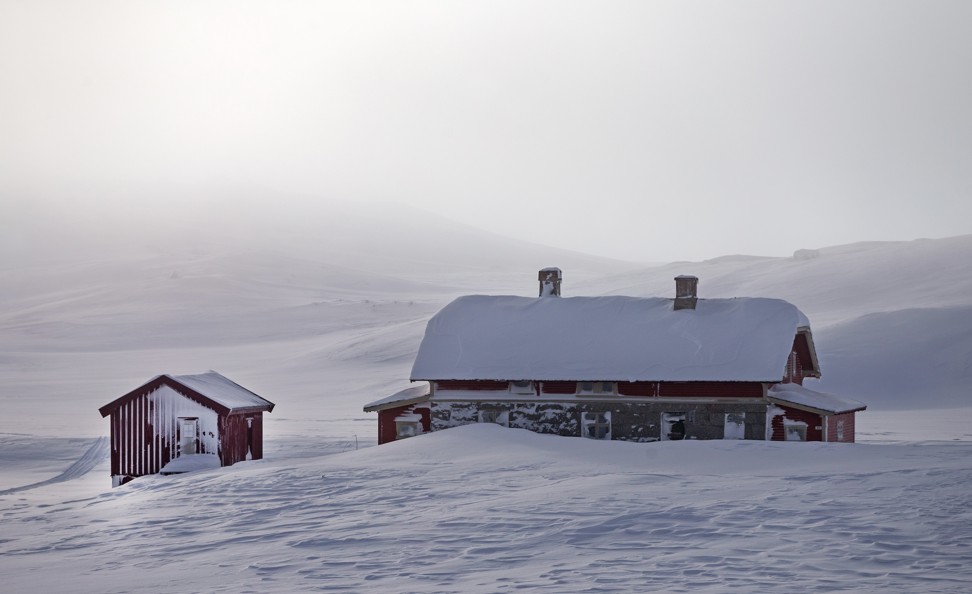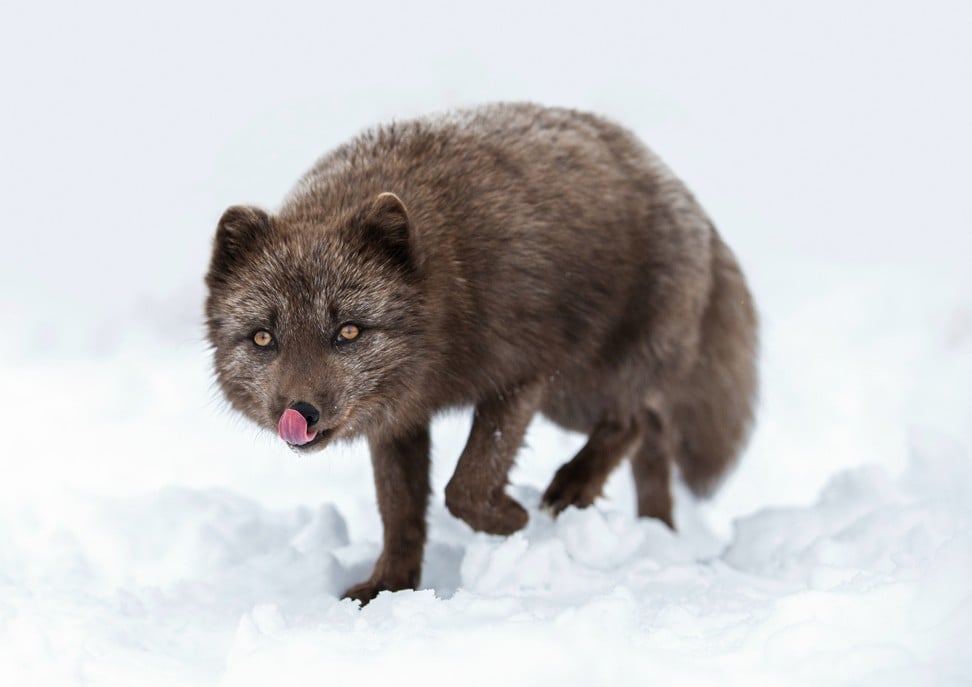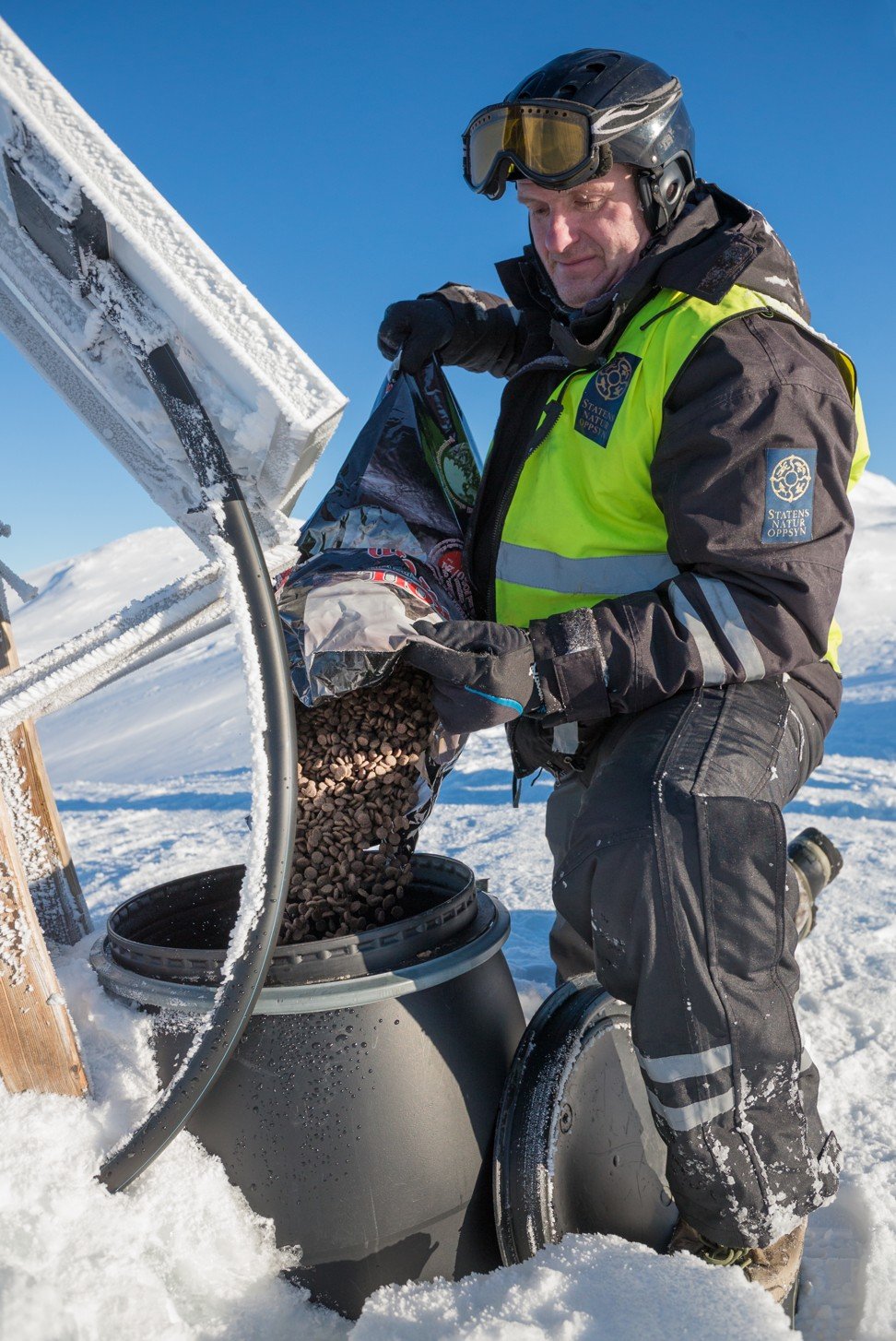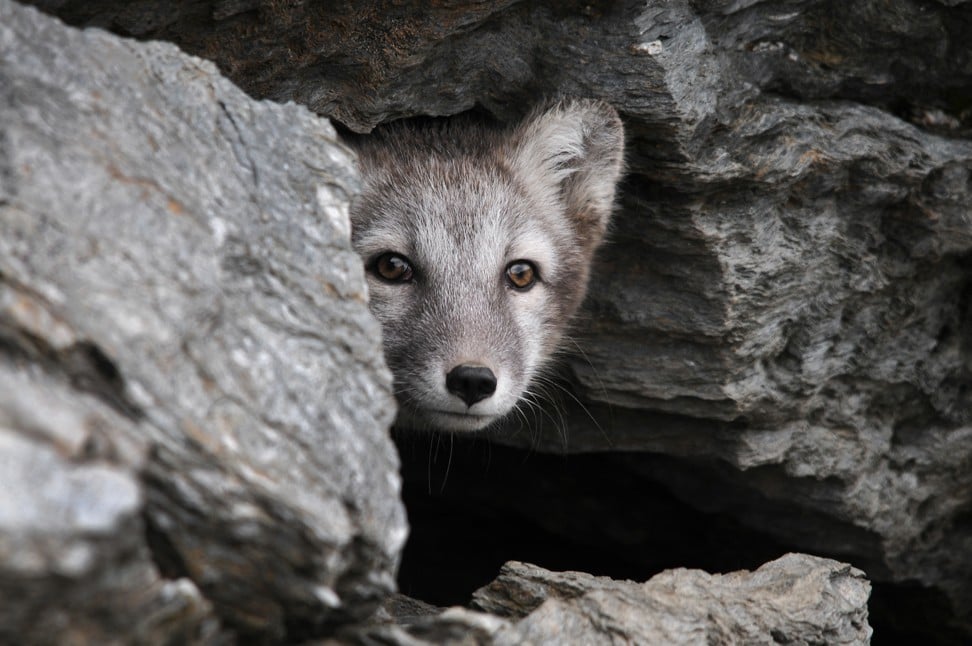
On the trail of southern Norway’s Arctic foxes, back from the brink
- The iconic Scandinavian animal, which had disappeared from the area for two decades, is once again leaving pawprints across Hardangervidda National Park
- Feeding and breeding programmes have successfully reintroduced the species
On the edge of southern Norway’s Hardangervidda National Park, two snowmobiles plough lonely furrows across a frozen vastness, dwarfed by the pristine surroundings. Temperatures on the sprawling Hardangervidda plateau,snowbound in winter, can plunge to minus 30 degrees Celsius or below, but today the wind is light and the sun hangs low in a cloudless, cobalt sky.
Petter Braaten, a senior nature inspector and park ranger attached to the Norwegian Directorate for Nature Management, halts the lead snowmobile and inspects the trail ahead. The snow is mostly deep and compacted, but lightly covered boulders can flip a snowmobile.
“You know, polar pioneers Amundsen, Scott and Shackleton all trained here,” he says, returning to his purring, brightly coloured vehicle. “With its Arctic climate and Antarctic landscapes, it’s hard to believe we’re only 200km west of Oslo.”
Today’s expedition into the park is more about conservation than exploration, but it’s not hard to imagine a procession of men and dogs traversing this icy wilderness.

Crossing a succession of frozen lakes, the convoy stops briefly in the remote village of Finse, its rust-red buildings draped in a thick mantle of snow. About 30 minutes later, the two snowmobiles reduce speed and begin climbing a gentle slope. Braaten kills his engine, signals for silence and scans the hilltop ahead with binoculars.
“There!” he says, suddenly, pointing to a small, snow-white animal, running across the snow with a curious bouncing gait until it disappears behind a slope. “Fjellrev [Arctic fox]! I think he’s been hanging out inside the feeding barrel. These animals aren’t stupid. When it’s cold and food is scarce, you minimise your energy use.”
Between the cities of Oslo and Bergen, and easily reached by train from either, the picturesque town of Geilo is a gateway to two national parks: Hallingskarvet and, to the south, Hardangervidda. Primarily a ski resort, Geilo offers a wide range of winter and summer activities, such as snowshoe hiking, dogsledding, rafting, horse riding, nature tours and excursions across the majestic Hardangervidda plateau.

Yet the sight of a healthy fox bounding across the Hardangervidda wilderness is not one that should be taken for granted. The current global population numbers several hundred thousand, but put the clock back two decades and this hardy animal had disappeared from southern Norway. With just 50 wild adults left in the country, the iconic canid – so important in Scandinavian nature and culture – was on the verge of extinction in Norway.
“Populations were fragmented and declining,” Braaten says. “Conservation experts came to realise the species wasn’t going to survive without human intervention, and action had to take place while there were still animals to work with.”
The Arctic fox is well adapted to sub-zero temperatures. A special circulatory system in its legs maintains body temperature and stops its feet from freezing, while rounded ears and a short muzzle and legs minimise heat loss. During autumn it stores fat to draw on in winter, and it can lower its metabolic rate when food is scarce. But perhaps the animal’s greatest adaptation is its fur, which covers even the underside of its paws. The Arctic fox has two colour variants: white, which is entirely white in winter but brown with yellow underparts in summer; and blue, which is entirely brown in summerand steely blue in winter.
“The colour is hereditary and a litter may have both white and blue pups,” Braaten explains. “While there are more white than blue foxes in the Scandinavian mountains, the blue colour dominates in coastal areas, probably because it provides better camouflage and protection from other predators.

Sadly, this beautiful pelt, the warmest of any animal in the Arctic, led to its demise in Scandinavia. Arctic foxes were heavily hunted here in the 1800s and early 1900s, until the animals were given protection in Norway in 1930.
“At that stage it was almost too late,” says Arild Landa, an Arctic fox expert at the Norwegian Institute for Nature Research. “By the end of the 20th century, more than 70 years after the species was protected, there were no signs of natural recovery.”
Seen from the first Arctic fox feeding station, the Hardangervidda scenery is sublime. Below, the frozen tongue of the Hardangerjøkulen glacier is veiled in mist; in the distance, huge cliffs shine as they rear up from a carpet of low-lying cloud.
Braaten removes a bag of Troll brand dog food from his sled, opens the top of a large plastic barrel and begins to pour in the dry pellets. A narrow pipe at the base of the barrel allows entry for slender-bodied Arctic foxes while keeping out larger wolverines and red foxes.

The food supports a burgeoning population, released in the area by the Norwegian Arctic Fox Reintroduction Programme. The aim of this initiative, which started in 2005, is to re-establish populations in areas where the Arctic fox once thrived, and to facilitate a natural exchange of animals between sites to ensure genetic diversity. Braaten oversees the programme in Hardangervidda.
“Around 40 to 60 fox pups, the product of a breeding station in the town of Oppdal, are now released in different areas every year,” he says, scooping up a fragment of faeces for DNA analysis. “The first wild-born litters from reintroduced foxes were recorded in 2010, and there are now estimated to be more than 300 animals across Norway. Reintroduced animals are already migrating and dispersing.”
Feeding stations are critical to the survival of the reintroduced Arctic fox, which is heavily reliant on lemmings for food. The three- to four-year population cycle of these small rodents is dramatic, periodically rising to unsustainably high levels before dying in huge numbers and the process repeating.
“The Arctic fox is highly vulnerable to changes in the lemming population,” Braaten says. “Because reintroduced fox populations are still critically low, we must support them during lean lemming years, especially in the winter.”

Climate breakdown is compounding the challenges facing Norway’s Arctic foxes. Not only is it messing with the lemming population cycle, it is also encouraging red foxes – direct competitors with their Arctic cousins – to venture further north.
“Right now red fox culls are as important as artificial feeding,” Braaten says. “The position of the Arctic fox is still precarious. We need to load the dice in its favour in every possible way.”
The Arctic fox belongs in the Scandinavian mountains. Along with the reindeer and lemming, it was one of the first species to enter Scandinavia after the last ice age.
“This beautiful creature is a born survivor,” says Kamilla Rust, a trainee park ranger under Braaten’s tutelage. “If we can increase the Norwegian population to around 500 animals then its future will look far more promising. With luck and hard work, the Hardangervidda plateau can become a stronghold of the Arctic fox once again.”

